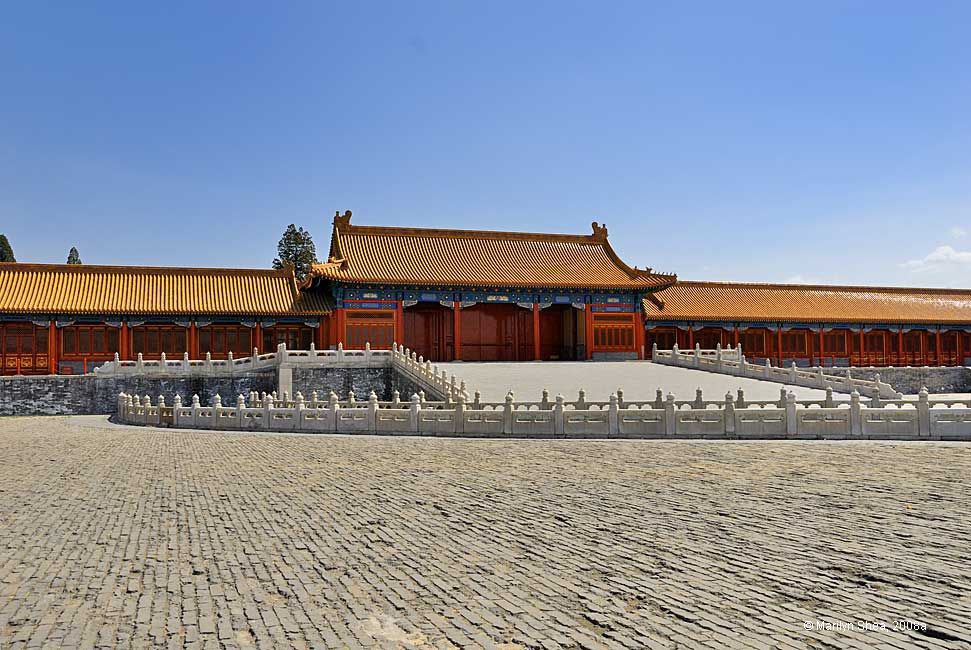 |
| The Gate of Blending Harmony 协和门 (Xiéhémén) on the east side of the Inner Golden Bridges leads to the Hall of Literary Brilliance (Wenhua dian) and to the Grand Secretariat of the Ming dynasty. During the Ming Dynasty it was known as the Gate of East (or Left) Obedience. In Chinese, the left hand is on the east and the right hand is on the west side because south rather than north is primary.
The Ming Jingtai Emperor 景泰 (Jǐngtài 1428-1457) who became Emperor Daizong 代宗 (Dàizōng) in 1450 met with military advisors at this gate to plan campaigns during wars. There are rooms within all the gates which could be set up for special purposes. This gate was convenient to offices and ministries on the east side of the palace. Today, many of the gates have special exhibitions in their rooms. Another Ming emperor, the Jiajing Emperor 嘉靖 (Jiājìng, 1507–1567) who became emperor in 1521 after his uncle's death, was implored by crying ministers protesting in front of this gate. They were demonstrating against the new emperor's attempts to fiddle with the imperial line. Although he had become emperor, he succeeded his uncle. To clarify the line, the practice was to have the previous emperor "adopt" the new emperor to demonstrate continuity and legitimacy. The Jiajing Emperor had other ideas. He decided that as long as things could be arranged posthumously, he would declare his own parents as emperor and empress and that would still make him the direct heir. The ministers gathered by the hundreds and knelt before the gate to cry out in protest at this violation of sacred custom. That was in 1524 and was called "Great Rites Controversy” (大礼仪 Dàlǐyí). The ministers lost the battle in the short run. Many of them were beaten and 134 were imprisoned. In the long run, history made them the victors. Emperor Jiajing's parents are not included in the list of Ming emperors. The Jiajing Emperor continued to do things his own way during his reign. After an assassination attempt in 1542, he chose to live outside the Forbidden City so he wouldn't have to see people. Perhaps his early fights with the ministers made him wary. He was only 14 when he became emperor and had not been raised with the expectation or the training to fulfill the role. He became a recluse, devoting himself to finding an elixir to prolong his life through Daoist alchemy. He is known for his cruelty, sadism, and poor governance. His cruelty stands out not only by its severity, but because there were few positive actions to balance it. He simply seems to have been petty, vindictive, and paranoid. The gate was remodeled under the Shunzhi Emperor (1644-1661) at the beginning of the Qing Dynasty and renamed Gate of Blending Harmony. |
http://hua.umf.maine.edu/China/HistoricBeijing/Forbidden_City/index.html
Last
update: January 2010
© Marilyn Shea, 2009